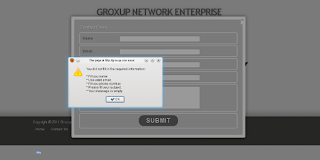Method is use :
1. JavaScript validation.
Integrated on the form web pages, refuse the submit form if the required fields is empty or out of criteria. This will pop-up a message window. We can this, on web page validation.
2. PHP script validation.
Add-on some validation script on the PHP file which processing the form output and send the mail. Then, redirect user to the corresponding page. We can say, this is on server validation.
3. Using captcha.
This method required user to fill some validation code to continue sending the form. Now a days, there was a lot of type of captcha. You can built and customised you own captcha or use free recaptcha. E.g: Recaptcha - Stop spam. Read books. We can say, this is a complete solutions for form validation; on web page and on server validation.
Next, I'll write a simple tutorial about applying this three methods of validating a form.
Have a nice day!
Write by Arafa Daming













